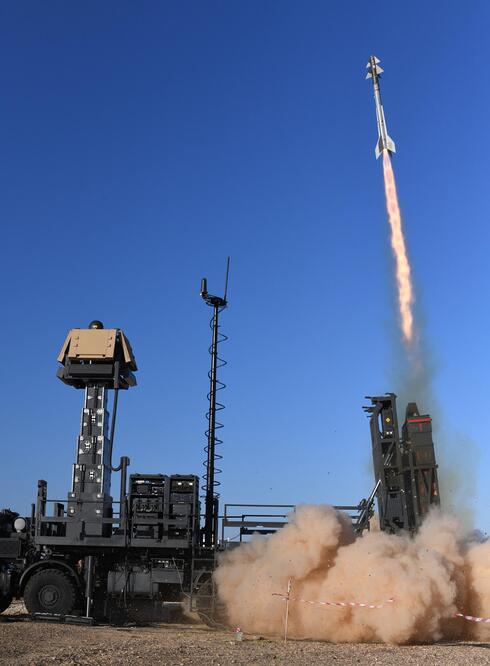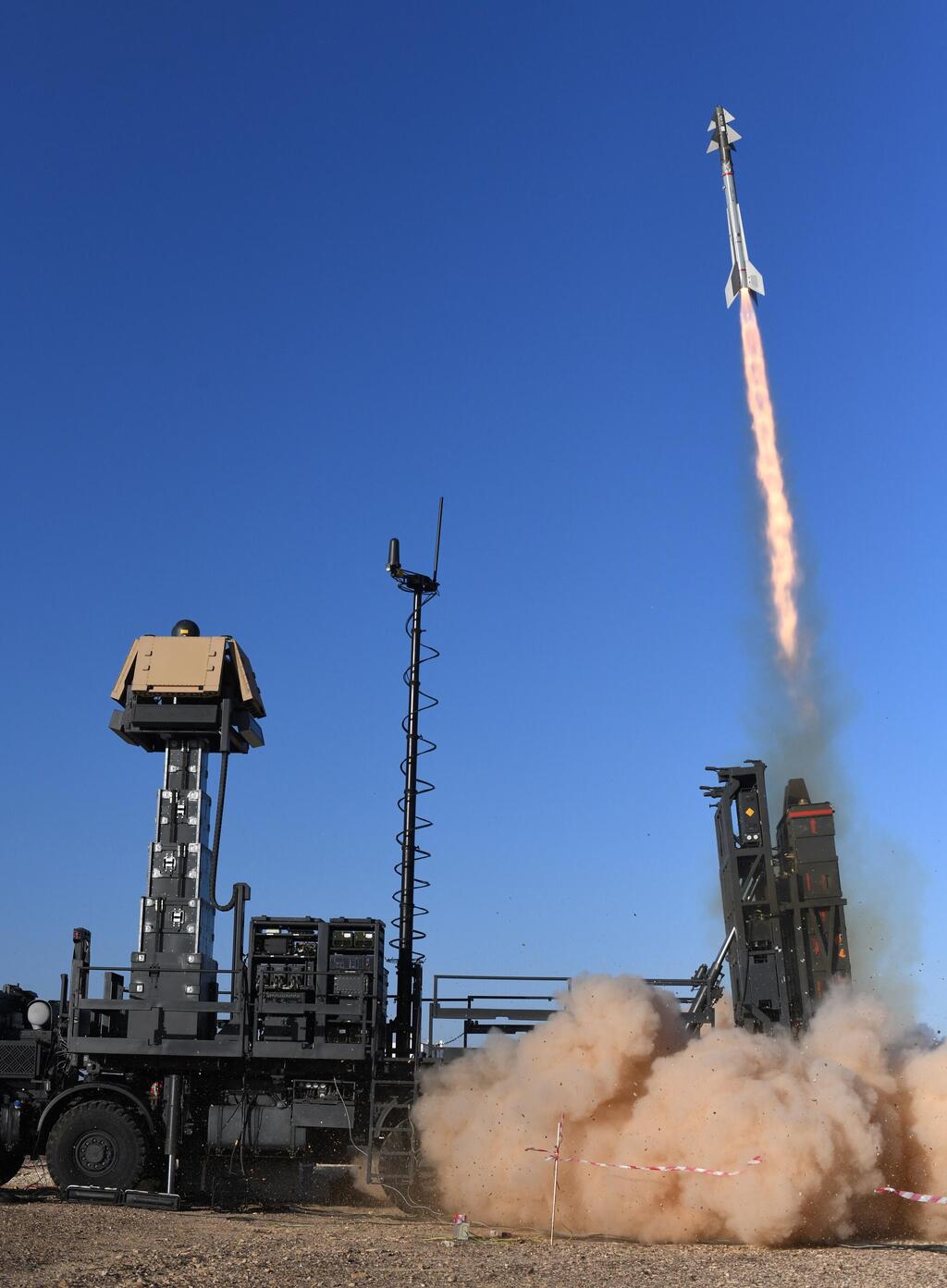
Israeli ‘all-in-one’ air defense system SPYDER intercepts UAV threats in successful test
During the test, SPYDER was challenged by a UAV that simulated an enemy aircraft and successfully intercepted it after detecting and identifying it in advance, tracking its path, and firing a Python 5 missile that hit it accurately
In a desert test field in southern Israel, Rafael and the Israeli Ministry of Defense completed a successful test to evaluate a new configuration of the air defense system dubbed ‘SPYDER All in One’. The test evaluated the ability of the SPYDER air defense system to counter the threat of UAVs, which fly at a relatively slow speed compared to other aerial threats, at low ground altitude, and with low radar signatures.
Rafael believes that the system, in its new configuration, will attract buyers from across the world keen on rearming and renewing their defense systems as a lesson from attacks by Iranian UAVs used by the Russian army to hit quality targets in Ukraine, and also used to attack Saudi oil facilities. The Houthi rebels in Yemen also use them on a regular basis to attack ships in the Bab al-Mandab strait.
During the test, SPYDER was challenged by a UAV that simulated an enemy aircraft and successfully intercepted it after detecting and identifying it in advance, tracking its path, and firing a Python 5 missile that hit it accurately. According to Rafael, the missiles launched by SPYDER are capable of also intercepting tactical ballistic missiles used to attack targets at a range of several hundred kilometers, aircrafts, and helicopters.
The SPYDER system has been sold around the world for about 15 years, and the test also evaluated its new configuration - SPYDER All in One. It is mobile and carried on a single truck and can quickly reach combat zones and provide immediate comprehensive protection for maneuvering ground forces or point targets, such as a critical facility or a military base. In addition, one of its main advantages is that it is essentially a truck, so it can be operated by only two crew members.
In the actual test, it was installed on a Tatra truck that could carry every necessary component, including an integrated radar from Rada, electro-optical systems, a command and control center, and missile launchers that fire two types of Rafael-made missiles, Derby and Python 5. According to Rafael, the ability to combine the two missiles in the same launchers allows the missile to be matched to the nature of the target along with additional data such as range, altitude, and speed.
The Python 5 missiles used by SPYDER are air-to-air missiles that are also used by the Israeli Air Force's F-16 and F-15 fighter jets and have already successfully intercepted a number of UAVs that they were able to detect and identify during the war in various sectors. The IDF is safeguarding Israel's northern border against attacks by the Iranian-backed Hezbollah terrorist organization, which has been launching continuous attacks on Israel from Lebanon. These assaults have persisted since the massacre of 1,200 Israeli civilians in cities adjacent to the Gaza Strip by Hamas terrorists.
Among the armies that operate SPYDER is that of the Czech Republic, which purchased it from Rafael in 2021 for over $600 million. Even before the Czech Republic, the armies of India and the Philippines were equipped with it, as well as at least five other armies.
Israel has not equipped itself with SPYDER, and the main focus of its defense systems is based on Iron Dome and David's Sling, also from Rafael. It is likely that Rafael will try to promote the sale of SPYDER in its new configuration to the IDF as well – as part of the strengthening of the defense arrays against the backdrop of the growth in the scope and severity of low-altitude aerial threats.
First published: 10:10, 12.01.24














